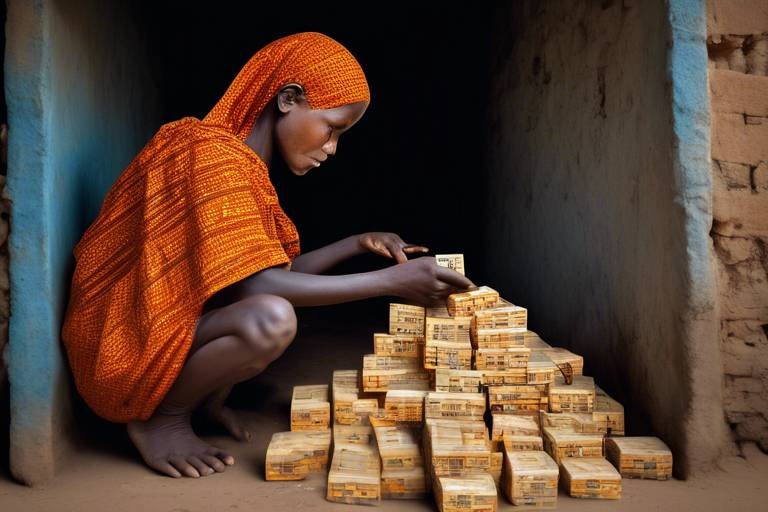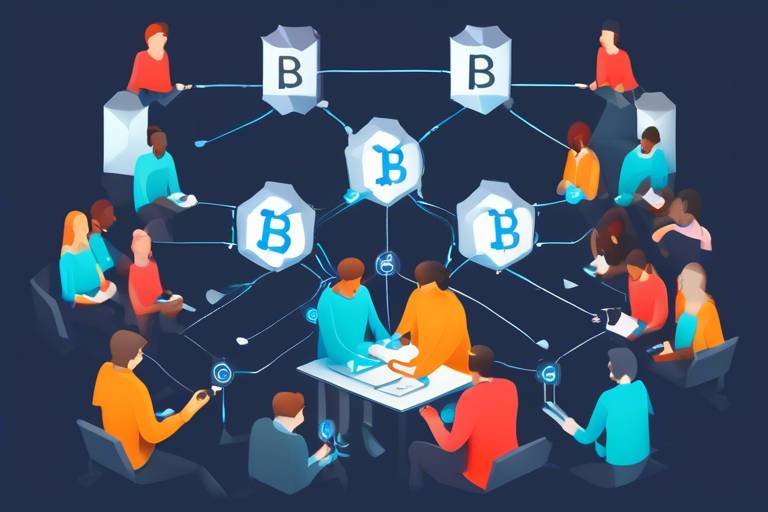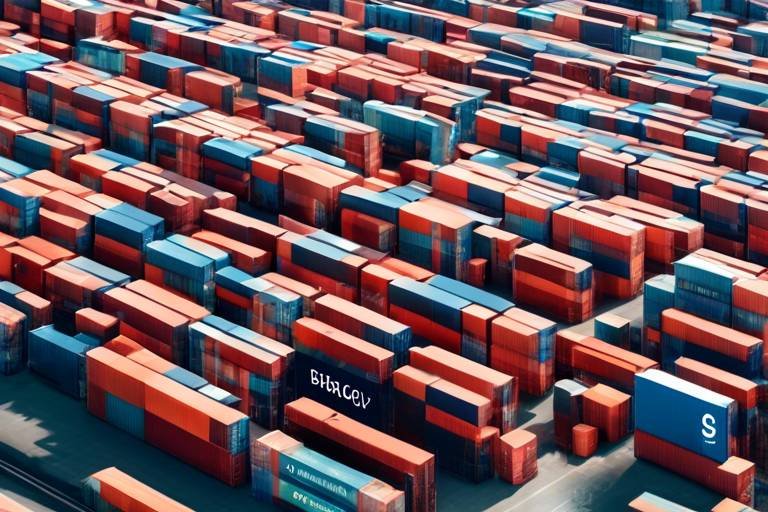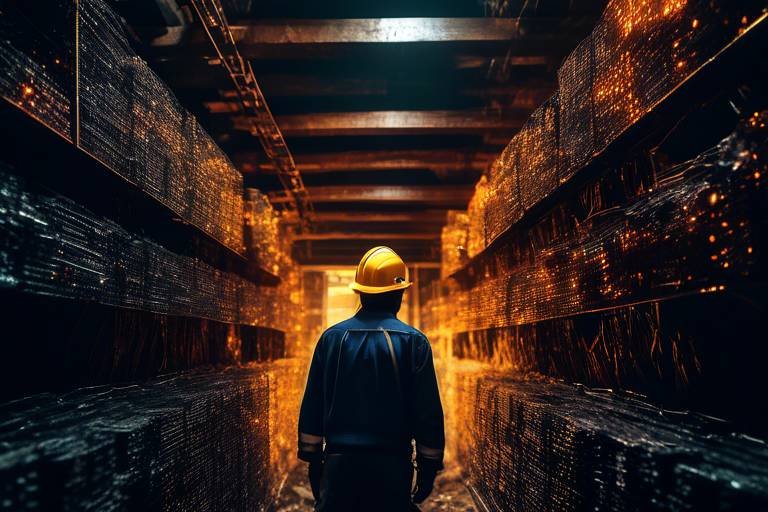The Role of Blockchain in Reducing Global Poverty
In today's rapidly evolving world, the issue of poverty remains a significant challenge that affects millions of lives. However, there's a beacon of hope on the horizon—blockchain technology. This groundbreaking innovation is not just about cryptocurrencies; it has the potential to revolutionize how we approach poverty alleviation on a global scale. Imagine a world where financial services are accessible to everyone, where supply chains are transparent, and where education is a click away. This is the promise that blockchain holds, and as we delve deeper into its applications, we’ll uncover how it can become a powerful tool in the fight against poverty.
Blockchain operates on a decentralized network, which means that no single entity controls it. This feature enhances security and transparency, making it an ideal solution for various sectors that play a role in poverty alleviation. By functioning as a distributed ledger, blockchain ensures that all transactions are recorded and visible to all parties involved, thereby reducing the risk of fraud and corruption. As we explore the multifaceted applications of blockchain, it becomes clear that its impact could be profound, especially in areas like financial inclusion, education, and supply chain management.
One of the most compelling aspects of blockchain is its ability to foster financial inclusion. In many developing regions, a large portion of the population remains unbanked, lacking access to essential financial services. Blockchain can bridge this gap by providing secure and efficient platforms for transactions. With just a smartphone and an internet connection, individuals can access banking services, invest in their futures, and participate in the economy. This newfound access can lead to improved living conditions and a pathway out of poverty.
Furthermore, the integration of blockchain in microfinance is a game-changer. It allows for innovative lending practices that empower individuals and small businesses in impoverished communities. By utilizing smart contracts, which automate loan agreements and ensure transparency, blockchain reduces costs and increases trust between lenders and borrowers. This not only makes lending more accessible but also creates a supportive ecosystem for entrepreneurship, essential for economic growth in these regions.
As we consider the broader implications of blockchain, it’s crucial to recognize its role in enhancing supply chain transparency. For farmers and producers in developing countries, fair trade practices can significantly improve their livelihoods. By using blockchain, consumers can trace the origin of products, ensuring that producers receive fair compensation for their goods. This transparency not only fosters trust but also encourages ethical consumerism, which can lead to better prices for producers and ultimately contribute to poverty reduction.
While the potential of blockchain is immense, it is not without challenges. Implementing these solutions requires robust infrastructure, which may be lacking in remote or underdeveloped areas. Additionally, regulatory hurdles can impede the widespread adoption of blockchain technologies. Addressing these challenges will be crucial for realizing the full potential of blockchain in combating poverty.
As we look to the future, the integration of blockchain with other emerging technologies, such as artificial intelligence (AI) and the Internet of Things (IoT), could create even more powerful solutions for poverty alleviation. Imagine a system where real-time data from IoT devices informs blockchain transactions, leading to more efficient resource distribution and enhanced decision-making processes. The possibilities are endless, and with global collaboration, we can leverage blockchain technology to create a world where poverty is no longer a pervasive issue.
- What is blockchain technology? Blockchain is a decentralized digital ledger that records transactions across multiple computers, ensuring that the data is secure and transparent.
- How can blockchain help reduce poverty? Blockchain can provide financial services to unbanked populations, enhance supply chain transparency, and improve access to education and vocational training.
- What are smart contracts? Smart contracts are self-executing contracts with the terms of the agreement directly written into code, allowing for automated and transparent transactions.
- What challenges does blockchain face in poverty reduction? Key challenges include infrastructure requirements, regulatory hurdles, and the need for digital literacy among potential users.

Understanding Blockchain Technology
Blockchain technology has emerged as a revolutionary force in the digital age, fundamentally changing how we think about data, transactions, and trust. At its core, blockchain is a decentralized ledger that records information across multiple computers in such a way that the registered data cannot be altered retroactively without the alteration of all subsequent blocks and the consensus of the network. This decentralization is crucial because it removes the need for a central authority, making transactions more secure and transparent.
Imagine a public library where every book is a block filled with information. Once a book is placed on the shelf, it cannot be removed or edited without the knowledge of everyone who has access to that library. This analogy illustrates how blockchain operates—a network of computers (or nodes) maintains a copy of the entire chain, ensuring that everyone has access to the same information. This mechanism not only enhances security but also fosters trust among users, as any attempt to manipulate the data would be immediately noticeable to the other participants in the network.
One of the most significant features of blockchain is its security. Each block contains a cryptographic hash of the previous block, a timestamp, and transaction data. This chaining of blocks makes it nearly impossible for anyone to alter a single block without altering all subsequent blocks, which would require consensus from the majority of the network. In a world where data breaches and fraud are rampant, this level of security is invaluable.
Moreover, blockchain technology operates on a consensus mechanism, which can vary depending on the specific implementation. Some common consensus algorithms include:
- Proof of Work (PoW): This requires participants to solve complex mathematical problems to validate transactions and create new blocks.
- Proof of Stake (PoS): In this model, validators are chosen based on the number of coins they hold and are willing to "stake" as collateral.
- Delegated Proof of Stake (DPoS): This allows stakeholders to elect delegates who will validate transactions on their behalf, increasing efficiency.
These consensus mechanisms ensure that all transactions are verified and agreed upon by the network participants, further enhancing the reliability of the blockchain. The implications of this technology are vast, especially when considering its applications in various sectors, including finance, supply chain management, and even voting systems. By providing a secure, transparent, and efficient way to conduct transactions and share information, blockchain offers a promising solution for many of the challenges we face today.
As we delve deeper into the potential of blockchain technology, it becomes evident that its impact extends far beyond mere financial transactions. It holds the power to disrupt traditional systems and create new opportunities for those who have been historically marginalized, particularly in the context of poverty alleviation. Understanding the intricacies of blockchain is the first step toward harnessing its potential to make a meaningful difference in the lives of millions around the world.

Financial Inclusion through Blockchain
In today's world, the gap between the rich and the poor continues to widen, leaving millions without access to essential financial services. This is where blockchain technology steps in like a superhero, ready to save the day! By providing a decentralized platform, blockchain has the potential to revolutionize financial inclusion, especially for the unbanked populations around the globe. Imagine a world where anyone can access financial services simply by having a smartphone, regardless of their geographic location or economic status. Sounds incredible, right? Well, it's not just a dream; it's becoming a reality!
Blockchain technology allows individuals to bypass traditional banking systems, which often impose high fees and stringent requirements that many cannot meet. With blockchain, people can engage in financial activities without the need for a bank account. This is particularly crucial for those living in remote areas where banks are few and far between. By leveraging this innovative technology, we can empower individuals to take control of their finances and improve their living conditions.
One of the most exciting developments in this space is the emergence of microfinance solutions powered by blockchain. Microfinance has long been a lifeline for small businesses and entrepreneurs in impoverished communities, providing them with the necessary capital to start or expand their ventures. However, traditional microfinance institutions often struggle with inefficiencies and high operational costs. Blockchain can streamline these processes, making it easier for lenders to connect with borrowers directly, thus reducing costs and increasing accessibility.
Moreover, the use of smart contracts in lending is another game-changer. These self-executing contracts automatically enforce the terms of an agreement when predefined conditions are met, minimizing the need for intermediaries. This not only cuts down on costs but also enhances transparency, as all transactions are recorded on a public ledger. Imagine being able to secure a loan without the fear of hidden fees or unfair terms—this is the promise that blockchain holds for the future of microfinance.
Additionally, the rise of Decentralized Finance (DeFi) platforms has further propelled financial inclusion. These platforms offer a variety of financial services, including lending, borrowing, and trading, all without the need for traditional banks. By utilizing blockchain, DeFi platforms can provide financial services to underserved regions, fostering economic growth and stability. Picture a farmer in a rural village who can now access credit to buy seeds and tools, transforming their livelihood and contributing to the local economy. This is the power of blockchain in action!
In conclusion, the potential of blockchain technology to enhance financial inclusion is immense. By breaking down barriers and providing access to financial services for unbanked populations, we can create a more equitable world. As we continue to explore the applications of blockchain in various sectors, it becomes increasingly clear that this technology is not just a trend; it is a vital tool in the fight against poverty.
- What is blockchain technology? Blockchain is a decentralized digital ledger that records transactions across multiple computers, ensuring security and transparency.
- How does blockchain improve financial inclusion? By allowing unbanked individuals to access financial services without traditional banking systems, blockchain promotes economic participation.
- What are smart contracts? Smart contracts are self-executing contracts with the terms of the agreement directly written into code, automatically enforcing conditions without intermediaries.
- What is Decentralized Finance (DeFi)? DeFi refers to financial services built on blockchain technology that operate without traditional banks, offering accessibility to underserved populations.

Microfinance Innovations
Microfinance has long been heralded as a beacon of hope for those trapped in the cycle of poverty, offering financial services to individuals and small businesses that traditional banks often overlook. With the advent of blockchain technology, the landscape of microfinance is evolving in ways that are both exciting and transformative. By leveraging the decentralized and secure nature of blockchain, microfinance innovations are not just enhancing the accessibility of financial services; they are revolutionizing the entire lending process. Imagine a world where a farmer in a remote village can secure a loan without the need for a bank, simply by using a smartphone. This is the promise of blockchain-enhanced microfinance.
One of the most significant advantages of blockchain in microfinance is its ability to facilitate efficient lending practices. Traditional microfinance institutions often face challenges such as high operational costs and lengthy approval processes. However, blockchain technology can streamline these processes through automated systems that reduce the need for intermediaries. For instance, smart contracts can be programmed to execute loan agreements automatically when certain conditions are met, significantly speeding up transactions and reducing costs for both lenders and borrowers.
Moreover, blockchain provides a level of transparency that is crucial in microfinance. By recording transactions on a public ledger, all parties involved can verify the details of a loan, including terms, repayment schedules, and borrower history. This transparency not only builds trust between lenders and borrowers but also helps to prevent fraud, a common issue in traditional lending systems. As a result, more individuals are likely to engage with microfinance solutions, knowing that they are protected and that their financial activities are being monitored.
To illustrate the impact of these innovations, consider the following table showcasing key benefits of blockchain in microfinance:
| Benefit | Description |
|---|---|
| Increased Accessibility | Blockchain allows individuals without traditional banking access to obtain loans using only their mobile devices. |
| Lower Costs | By eliminating intermediaries, blockchain reduces transaction fees and operational costs. |
| Enhanced Transparency | Public ledgers provide a clear view of all transactions, fostering trust among participants. |
| Faster Transactions | Smart contracts automate processes, leading to quicker loan approvals and disbursements. |
Additionally, the rise of decentralized finance (DeFi) platforms is further amplifying the potential of microfinance. These platforms utilize blockchain to create ecosystems where individuals can lend and borrow directly from one another, bypassing traditional financial institutions entirely. This peer-to-peer lending model not only democratizes access to finance but also allows for more flexible terms tailored to the needs of borrowers. Imagine a small business owner who needs a quick infusion of cash to purchase inventory; with DeFi, they can connect directly with lenders who are willing to support their venture, often with lower interest rates than those offered by banks.
In conclusion, the innovations brought about by blockchain technology are paving the way for a new era in microfinance. By enhancing accessibility, reducing costs, and increasing transparency, blockchain is not just a tool; it is a catalyst for change. As we continue to explore the potential of this technology, it becomes clear that microfinance innovations could play a pivotal role in alleviating poverty and empowering individuals across the globe. The journey has just begun, and the possibilities are as vast as the challenges they aim to solve.
- What is microfinance? Microfinance refers to financial services, including loans, savings, and insurance, provided to low-income individuals or groups who lack access to traditional banking services.
- How does blockchain enhance microfinance? Blockchain improves microfinance by providing a secure, transparent, and efficient platform for transactions, reducing costs, and increasing accessibility for borrowers.
- What are smart contracts? Smart contracts are self-executing contracts with the terms of the agreement directly written into code, allowing for automated and trustless transactions.
- Can blockchain help in other areas apart from microfinance? Yes, blockchain has applications in various sectors, including supply chain management, healthcare, and education, among others.

Smart Contracts in Lending
Smart contracts are revolutionizing the lending landscape, particularly in the realm of microfinance. But what exactly are they? In simple terms, smart contracts are self-executing contracts with the terms of the agreement directly written into code. This technology operates on the blockchain, ensuring that once the conditions are met, the contract automatically executes without the need for intermediaries. Imagine a vending machine: you insert the right amount of money, select your item, and it dispenses your snack without anyone needing to be present to facilitate the transaction. Smart contracts work in a similar way, providing a seamless and efficient process.
One of the most significant benefits of smart contracts in lending is their ability to reduce costs. Traditional lending processes often involve numerous intermediaries, each taking a cut of the profits, which can inflate interest rates and fees for borrowers. With smart contracts, these intermediaries are eliminated, allowing for lower costs and more favorable terms for borrowers. This is particularly crucial for individuals in impoverished communities who may struggle to access affordable credit.
Furthermore, smart contracts enhance transparency in lending transactions. All parties involved can view the contract terms and track the loan’s progress on the blockchain. This transparency builds trust among borrowers and lenders, as it minimizes the potential for fraud or miscommunication. For instance, if a borrower defaults on a loan, the smart contract can automatically enforce penalties or trigger collateral seizure, ensuring that the lender's interests are protected.
Additionally, smart contracts can facilitate micro-lending solutions tailored to the unique needs of borrowers in developing regions. These contracts can be designed to accommodate smaller loan amounts with flexible repayment schedules, making it easier for individuals to access funds for small business ventures or personal needs. By breaking down the barriers to traditional lending, smart contracts empower those who previously had limited access to financial services.
However, while the potential of smart contracts in lending is vast, there are challenges to consider. Issues such as technical literacy and access to the necessary technology can hinder adoption, especially in remote areas. Education about how these contracts function is essential to ensure that borrowers understand their rights and responsibilities. Moreover, the legal recognition of smart contracts varies by jurisdiction, which can complicate their implementation in different regions.
In conclusion, smart contracts represent a transformative force in the lending sector, particularly for microfinance initiatives aimed at reducing poverty. By leveraging the benefits of blockchain technology, these contracts can create a more inclusive financial ecosystem, enabling individuals to take charge of their financial futures. As we continue to explore the potential of blockchain in poverty alleviation, the role of smart contracts will undoubtedly be a key area of focus.
- What are smart contracts? Smart contracts are self-executing contracts with the terms directly written into code, operating on the blockchain.
- How do smart contracts reduce costs in lending? They eliminate intermediaries, which lowers fees and interest rates for borrowers.
- Can smart contracts ensure transparency? Yes, all parties can view contract terms and track transactions on the blockchain, promoting trust.
- What challenges do smart contracts face in lending? Technical literacy, access to technology, and legal recognition can hinder their adoption.
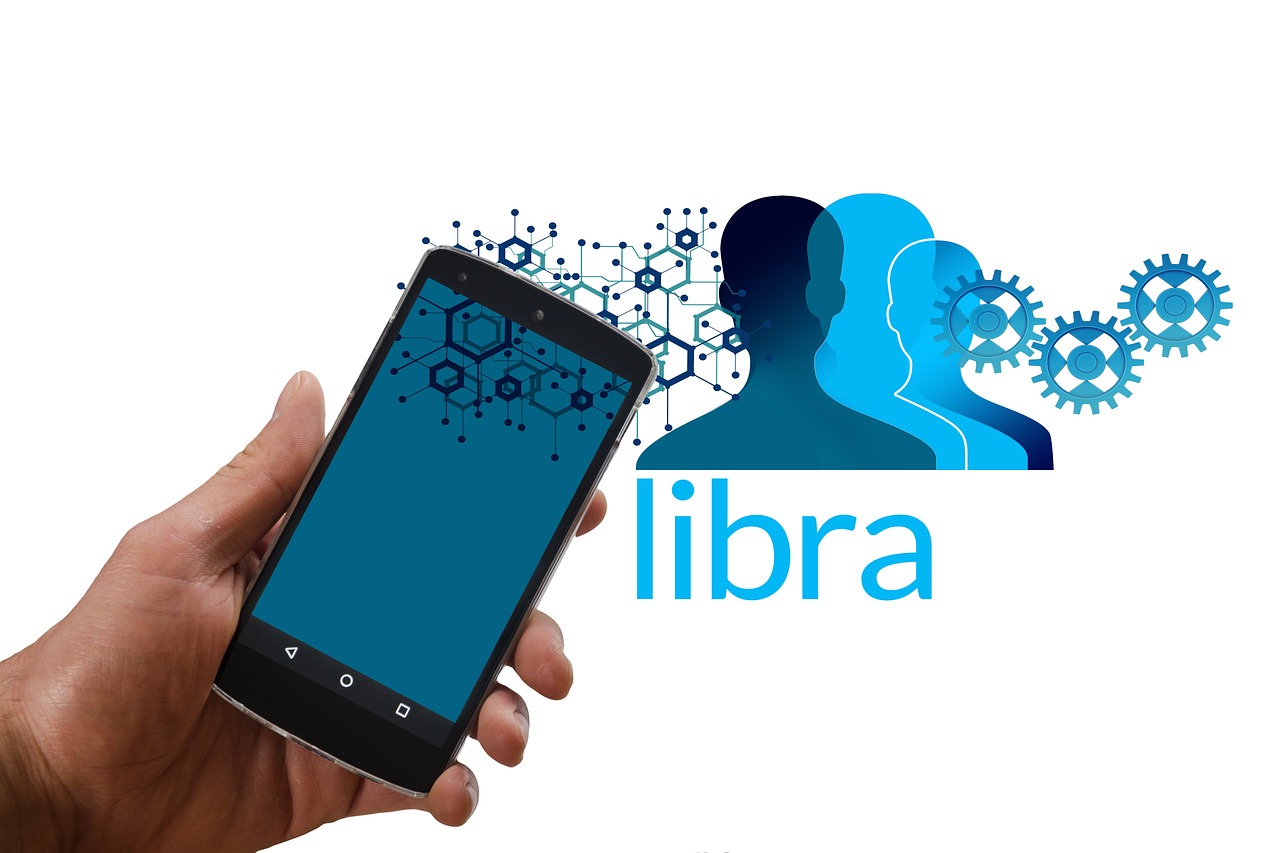
Decentralized Finance (DeFi) Solutions
Decentralized Finance, or DeFi, is revolutionizing the way we think about financial services, particularly for those in impoverished regions. Imagine a world where anyone with an internet connection can access banking services, loans, and investment opportunities without the need for traditional banks. This is the promise of DeFi, and it holds immense potential for economic empowerment. By eliminating intermediaries, DeFi platforms enable users to interact directly with financial services, fostering inclusivity and accessibility.
One of the most significant advantages of DeFi is its ability to provide financial services to the unbanked and underbanked populations. Traditional banking systems often exclude individuals due to a lack of credit history, identification, or geographical barriers. However, DeFi operates on blockchain technology, which allows users to create a digital identity and access financial tools without the constraints of traditional systems. This shift can lead to increased participation in the economy, enabling individuals to improve their living conditions and create wealth for themselves and their families.
DeFi platforms offer various services, such as lending, borrowing, and trading, all facilitated through smart contracts. These contracts are self-executing agreements with the terms directly written into code, ensuring transparency and reducing the risk of fraud. For example, a farmer in a developing country can use a DeFi platform to secure a loan for seeds and equipment. By leveraging their digital assets as collateral, they can access funds quickly and efficiently, empowering them to increase their productivity and income.
Moreover, DeFi solutions are often more cost-effective than traditional financial services. Without the need for intermediaries, users can benefit from lower fees and better interest rates. This financial democratization can lead to a more equitable distribution of resources, particularly in regions where access to capital is a significant barrier to economic growth. As DeFi continues to evolve, it is essential to ensure that these platforms remain user-friendly and accessible to those who may not have extensive technological knowledge.
In summary, Decentralized Finance is not just a buzzword; it represents a transformative shift in how financial services can be delivered, especially to marginalized communities. By providing access to essential financial tools, DeFi has the potential to significantly reduce poverty and promote economic development. As we look to the future, the challenge lies in ensuring that these solutions are scalable, sustainable, and inclusive for all.
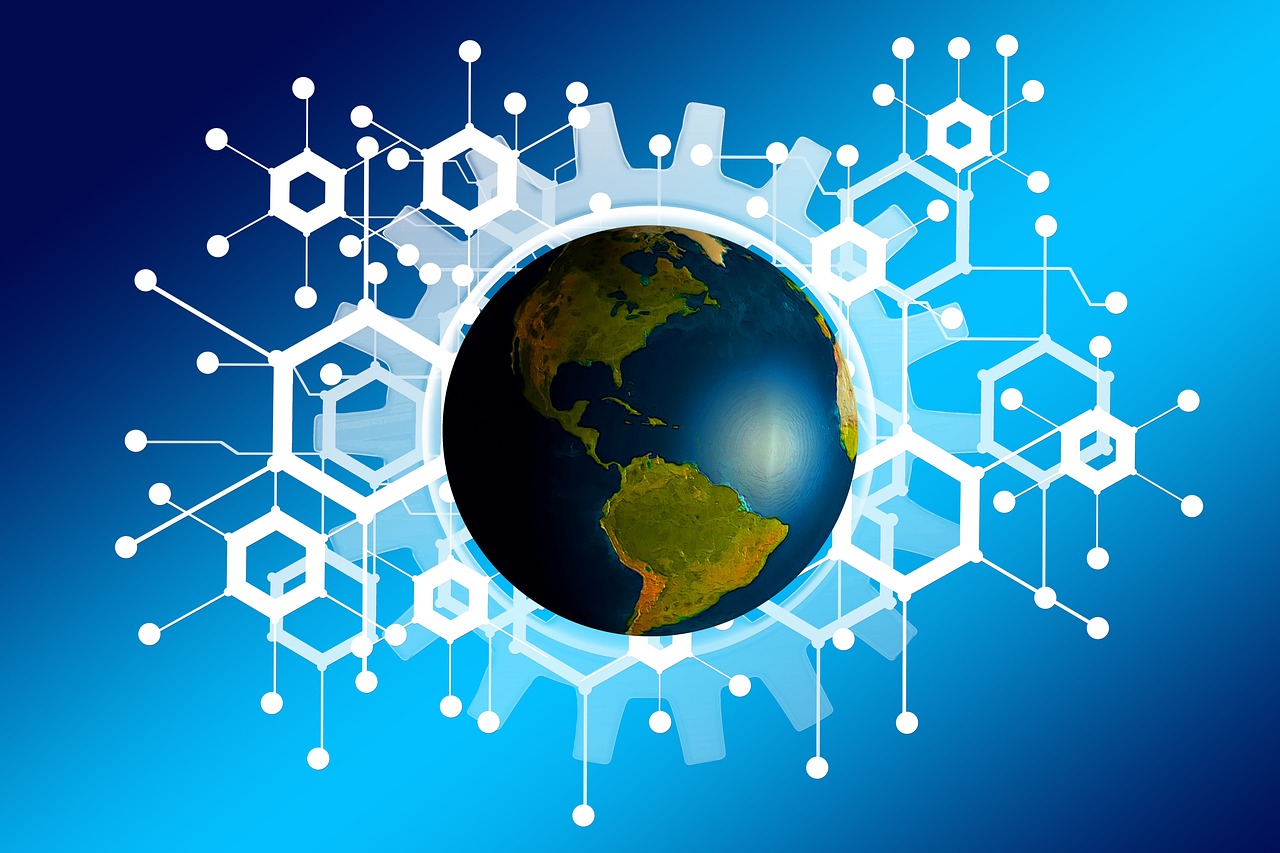
Supply Chain Transparency
In today's interconnected world, the importance of transparency in supply chains cannot be overstated, especially when it comes to improving the lives of individuals in impoverished communities. Imagine a world where every product you buy comes with a detailed history, showing exactly how it was made, who made it, and the conditions under which it was produced. This is not just a dream; it's a reality that blockchain technology is making possible. By utilizing a decentralized ledger, blockchain allows all stakeholders in a supply chain—from producers to consumers—to access the same information, thus fostering trust and accountability.
One of the most significant benefits of enhanced supply chain transparency is the ability to ensure fair trade practices. In many developing countries, farmers and producers often find themselves at the mercy of middlemen who dictate prices and terms. However, with blockchain, producers can directly connect with consumers and retailers, eliminating the need for intermediaries. This direct access can lead to better prices for producers, ultimately improving their income and living conditions. For instance, consider a farmer who grows organic coffee. Through a blockchain-enabled platform, they can showcase their product's journey from farm to cup, allowing consumers to make informed choices and support fair trade.
Moreover, blockchain can help in verifying the authenticity of products, which is particularly crucial in sectors like agriculture and textiles. By scanning a QR code on a product, consumers can trace its origins, ensuring that they are purchasing ethically sourced goods. This level of transparency can empower consumers to make choices that align with their values, creating a ripple effect that encourages more sustainable practices among producers.
However, the journey toward complete supply chain transparency is not without its challenges. For blockchain to be effective, all participants in the supply chain must be willing to adopt the technology and share their data. This requires a cultural shift and a commitment to collaboration that may not always be easy to achieve. Furthermore, the initial setup costs and technological infrastructure needed to implement blockchain can be significant barriers, especially in remote areas.
In conclusion, while there are hurdles to overcome, the potential for blockchain to enhance supply chain transparency is immense. By fostering fair trade practices, empowering producers, and enabling consumers to make informed choices, blockchain technology can play a vital role in alleviating poverty. As we move forward, it will be crucial for stakeholders at all levels to work together, harnessing the power of blockchain to create a more equitable and transparent global economy.
- What is blockchain technology? Blockchain is a decentralized digital ledger that records transactions across many computers, ensuring that the recorded transactions cannot be altered retroactively.
- How does blockchain improve supply chain transparency? By providing a secure and immutable record of transactions, blockchain allows all parties in the supply chain to access the same information, fostering trust and accountability.
- What are the challenges of implementing blockchain in supply chains? Challenges include the need for technological infrastructure, the willingness of all participants to share data, and potential high initial costs.
- Can consumers benefit from blockchain transparency? Yes, consumers can make informed choices about the products they purchase, ensuring they support ethical and sustainable practices.

Education and Skill Development
Education is often hailed as the great equalizer, a powerful tool that can lift individuals out of poverty and open doors to new opportunities. In today's digital age, blockchain technology is emerging as a game-changer in this arena. By providing a secure and transparent platform for educational credentials, blockchain can revolutionize how individuals gain access to learning and skill development.
Imagine a world where qualifications are instantly verifiable, eliminating the need for tedious background checks and the potential for fraud. This is the promise of blockchain. With its decentralized nature, blockchain enables secure storage of educational records, making it easier for employers to trust the qualifications of potential hires, especially those from disadvantaged backgrounds. This not only boosts the confidence of job seekers but also enhances their employability in a competitive job market.
Moreover, blockchain technology can facilitate access to affordable online learning platforms. Traditional education systems often come with high costs and geographical barriers, leaving many individuals in low-income communities without the skills they need to thrive. However, blockchain-based platforms can offer a wide range of courses at minimal costs, making education accessible to all. These platforms can also provide micro-credentials, allowing learners to showcase their skills without the burden of a full degree.
To illustrate the impact of blockchain in education, consider the following table that highlights some of the key benefits:
| Benefit | Description |
|---|---|
| Secure Credential Verification | Employers can easily verify qualifications, reducing hiring risks. |
| Access to Affordable Learning | Low-income individuals can access quality education at reduced costs. |
| Micro-Credentials | Individuals can earn and showcase specific skills without a full degree. |
| Global Reach | Online platforms can reach learners in remote and underserved areas. |
Furthermore, the integration of blockchain with other technologies, like artificial intelligence and the Internet of Things, can lead to even more innovative educational solutions. For instance, AI can personalize learning experiences based on individual needs, while IoT devices can provide real-time feedback on skill acquisition. This synergy can create a more engaging and effective learning environment, fostering skill development that is crucial for breaking the cycle of poverty.
However, it's important to acknowledge the challenges that come with implementing blockchain in education. Issues such as digital literacy and access to necessary technology can hinder its effectiveness. To truly harness the power of blockchain in education, we must ensure that all individuals, regardless of their background, have the skills and tools they need to participate in this digital revolution.
In conclusion, blockchain technology holds immense potential in enhancing education and skill development for impoverished communities. By providing secure credential verification and access to affordable learning opportunities, it can empower individuals to gain the skills needed for better employment prospects. As we move forward, it’s essential to address the barriers to access and continue exploring innovative solutions that leverage blockchain's capabilities.
- How does blockchain improve credential verification? Blockchain allows for secure and tamper-proof storage of educational records, making it easy for employers to verify qualifications.
- Can blockchain really make education more affordable? Yes, blockchain-based platforms can offer courses at lower costs, making education accessible to a wider audience.
- What are micro-credentials? Micro-credentials are short, focused qualifications that demonstrate specific skills, allowing learners to showcase their abilities without needing a full degree.
- What challenges does blockchain face in education? Challenges include digital literacy, access to technology, and the need for regulatory frameworks to support its implementation.

Credential Verification
In today's competitive job market, having verified credentials can be the difference between landing a job and being overlooked. For individuals from disadvantaged backgrounds, this challenge is even more pronounced. Enter blockchain technology, a game-changer that offers a secure and transparent way to verify educational and professional qualifications. Imagine a world where resumes are not just pieces of paper but are backed by a decentralized ledger that confirms every claim made by a candidate. This is not just a dream; it’s becoming a reality.
Traditional credential verification processes can be cumbersome, often requiring lengthy background checks and manual verification that can take weeks, if not months. With blockchain, this process can be streamlined significantly. Each credential, whether it’s a degree, certification, or skill, can be recorded on the blockchain as an immutable entry. This means that once a credential is verified and added to the blockchain, it cannot be altered or deleted, ensuring its authenticity.
One of the most exciting aspects of blockchain in credential verification is its potential to empower individuals from low-income communities. For many, the cost of obtaining a degree or certification is a significant barrier. However, with blockchain, educational institutions can issue digital diplomas directly to students, which they can then share with potential employers without the need for third-party verification services. This not only reduces costs but also speeds up the hiring process, allowing employers to trust the qualifications of candidates without extensive checks.
Furthermore, blockchain can help in creating a global standard for credential verification. Currently, different countries and institutions have varying standards and processes for issuing credentials, which can lead to confusion and mistrust among employers. By utilizing a universal blockchain system, employers can easily verify the qualifications of candidates from different backgrounds and regions, leveling the playing field for job seekers worldwide.
However, it’s essential to consider the challenges that come with implementing blockchain for credential verification. Issues such as digital literacy and access to technology can hinder its adoption, especially in remote areas. Educational institutions and governments must work together to ensure that individuals are not only educated about the benefits of blockchain but also provided with the necessary tools to utilize it effectively.
In conclusion, blockchain technology holds immense potential for revolutionizing credential verification. By providing a secure, transparent, and efficient method for validating qualifications, it can help individuals from disadvantaged backgrounds gain access to better job opportunities, ultimately contributing to poverty alleviation. As we move forward, it is crucial to address the challenges and ensure that this technology is accessible to all, paving the way for a more equitable future.
- What is blockchain technology? Blockchain is a decentralized digital ledger that records transactions across many computers in a way that the registered information cannot be altered retroactively.
- How does blockchain improve credential verification? Blockchain provides a secure and immutable way to store and share credentials, allowing for quick and reliable verification without the need for third-party services.
- Can blockchain help in reducing poverty? Yes, by facilitating access to financial services and improving job opportunities through verified credentials, blockchain can play a significant role in poverty reduction.
- What are the challenges of implementing blockchain for credential verification? Challenges include digital literacy, access to technology, and the need for collaboration between educational institutions and governments.
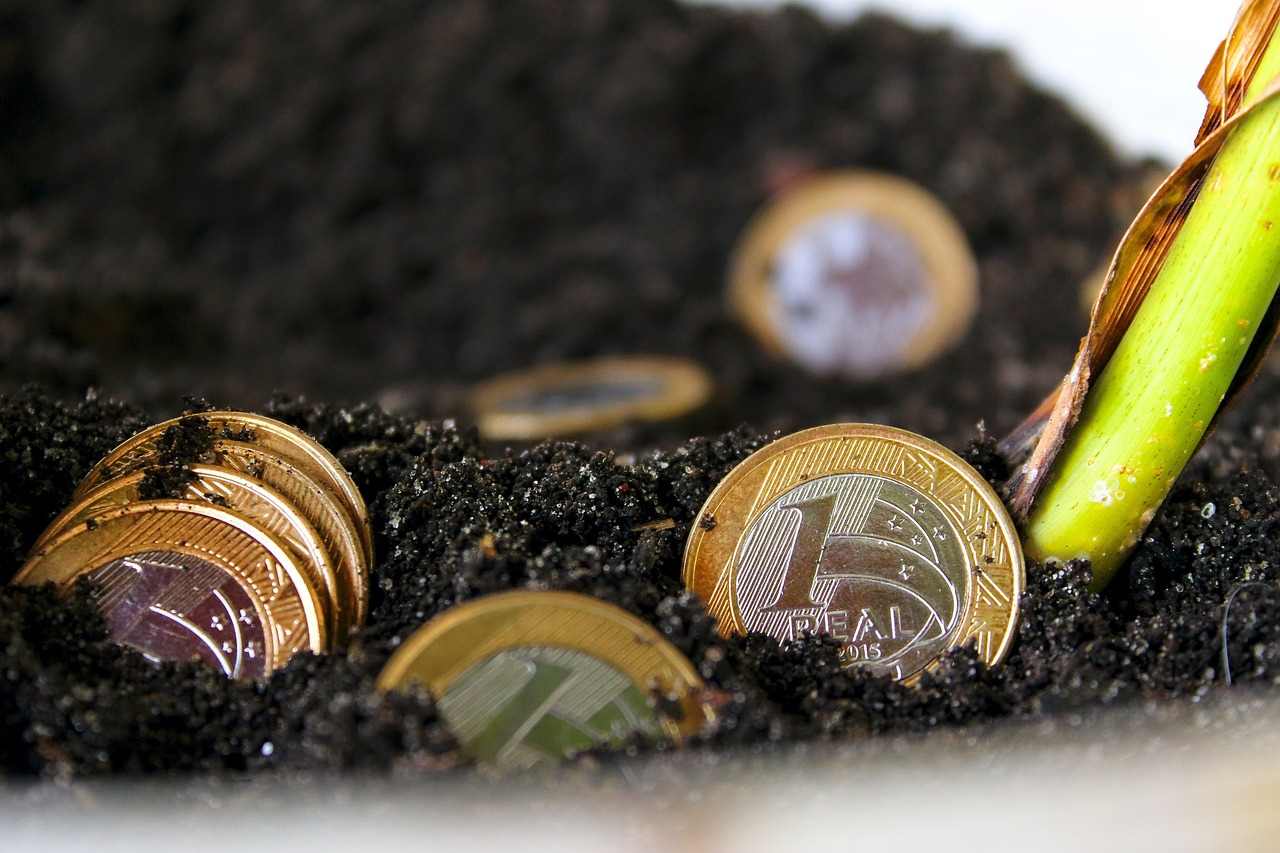
Online Learning Platforms
In today's digital age, are revolutionizing education, especially for those in low-income communities. Imagine a world where anyone with an internet connection can access quality educational resources—this is the promise of blockchain technology. By leveraging decentralized systems, these platforms can offer affordable and accessible learning opportunities that are often out of reach for many.
One of the most significant advantages of blockchain in online education is its ability to provide secure and transparent credential verification. Traditional education systems often struggle with verifying qualifications, which can lead to distrust among employers. However, with blockchain, every certificate and achievement can be securely stored and easily verified. This means that individuals from disadvantaged backgrounds can prove their skills and qualifications without the fear of their credentials being questioned. It’s like having a digital badge that not only showcases your abilities but also carries the weight of authenticity.
Furthermore, several blockchain-based platforms are emerging that offer a variety of courses ranging from technical skills to soft skills. These platforms often utilize smart contracts to automate enrollment and payment processes, making education not just accessible but also efficient. For instance, platforms can offer courses at a fraction of the cost of traditional institutions, making it easier for individuals to invest in their education.
Take a look at some notable blockchain-based online learning platforms:
| Platform Name | Focus Area | Key Features |
|---|---|---|
| OpenClassrooms | Various Skills | Affordable courses with industry-recognized certifications |
| BitDegree | Tech Skills | Blockchain-based certificates and reward systems |
| AcademyChain | Professional Development | Secure credential verification and career support |
The potential of these platforms extends beyond just individual learning. They can create a ripple effect in communities by equipping individuals with the skills needed to improve their economic standing. As more people gain access to education, the overall skill level of the community rises, leading to increased job opportunities and economic growth.
However, it's essential to acknowledge that while blockchain technology presents exciting possibilities, challenges remain. Issues such as internet access, digital literacy, and infrastructure must be addressed to ensure that these platforms can reach the most vulnerable populations. Without tackling these barriers, the promise of online learning platforms powered by blockchain may not be fully realized.
In conclusion, online learning platforms utilizing blockchain technology have the potential to democratize education, making it accessible to all, regardless of socioeconomic status. As we move forward, it's crucial to continue exploring how these innovations can be harnessed to create a more equitable world.
- What is blockchain technology?
Blockchain is a decentralized digital ledger that records transactions across many computers securely and transparently. - How can blockchain help reduce poverty?
By providing access to financial services, education, and transparent supply chains, blockchain can empower individuals and communities. - What are smart contracts?
Smart contracts are self-executing contracts with the terms of the agreement directly written into code, enabling automation and reducing the need for intermediaries. - Are there challenges to implementing blockchain in education?
Yes, challenges include technological barriers, regulatory issues, and the need for improved digital literacy among users.
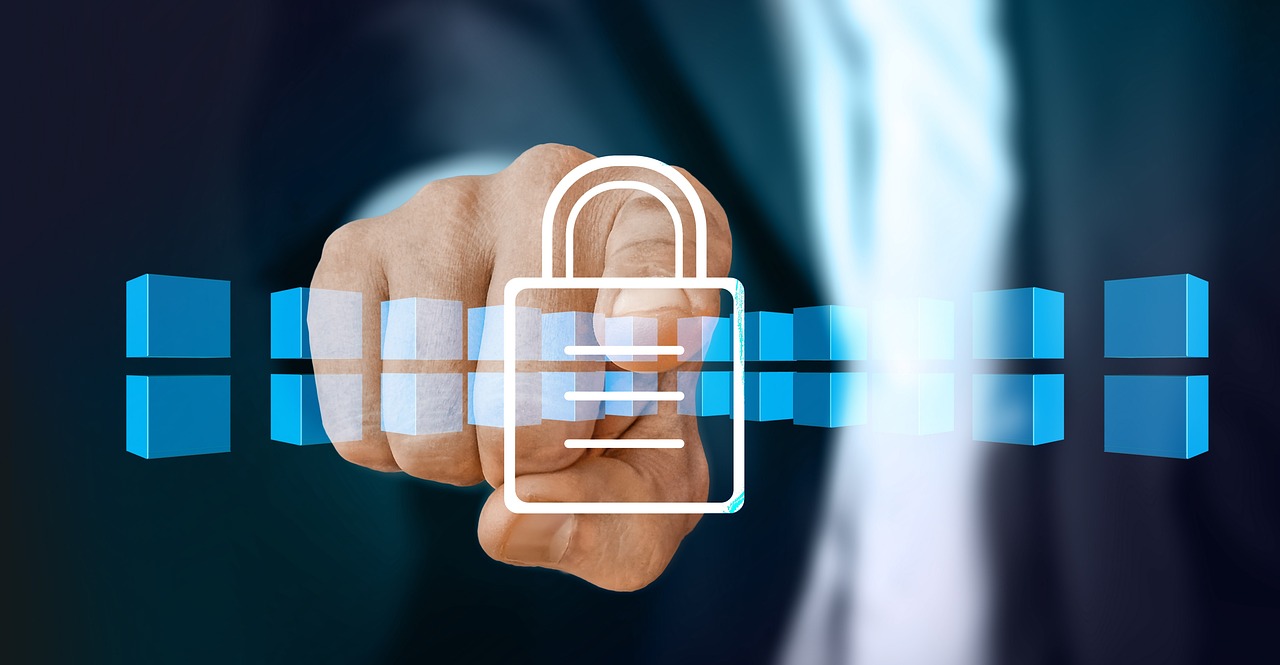
Challenges and Limitations
While blockchain technology holds immense promise for reducing global poverty, it is not without its challenges and limitations. One of the most significant hurdles is the infrastructure requirements. In many developing regions, access to reliable internet and electricity is limited. Without the necessary technological backbone, the implementation of blockchain solutions becomes nearly impossible. Imagine trying to build a skyscraper on a shaky foundation; the same principle applies here. If the basic infrastructure isn't in place, any blockchain initiative is likely to falter.
Moreover, there are regulatory hurdles that must be navigated. Governments around the world are still grappling with how to regulate blockchain technology, and this uncertainty can lead to hesitance among potential users and investors. For instance, if a community wants to adopt a blockchain-based microfinance solution, they might face legal restrictions that could stifle innovation and growth. The regulatory landscape is akin to a labyrinth—complicated and often confusing, making it challenging for stakeholders to find their way.
Another critical factor is the need for digital literacy. Many individuals in impoverished communities may lack the skills necessary to engage with blockchain technology effectively. If we want to empower these populations, we need to ensure they have the knowledge and training to navigate this new digital landscape. This is where educational initiatives become essential. Without proper training, even the most advanced blockchain solutions can seem like a foreign language to those who need them the most.
In summary, while blockchain technology has the potential to revolutionize poverty alleviation efforts, it faces significant challenges. Addressing these limitations requires a concerted effort from governments, NGOs, and the private sector to build the necessary infrastructure, navigate regulatory frameworks, and enhance digital literacy. Only then can we truly harness the power of blockchain to make a meaningful impact in the fight against global poverty.
- What is blockchain technology? Blockchain is a decentralized digital ledger that records transactions across many computers in a way that the registered transactions cannot be altered retroactively.
- How can blockchain help reduce poverty? Blockchain can provide access to financial services for unbanked populations, enhance supply chain transparency, and improve access to education and vocational training.
- What are the main challenges in implementing blockchain for poverty reduction? Key challenges include infrastructure requirements, regulatory hurdles, and the need for digital literacy among target populations.
- Are there successful examples of blockchain being used for poverty alleviation? Yes, there are several case studies where blockchain has been effectively implemented in agriculture and healthcare to improve living conditions.

Infrastructure Requirements
When it comes to implementing blockchain technology in efforts to reduce global poverty, one cannot overlook the critical role of infrastructure. Think of it as the foundation of a house; without a solid base, everything built on top could crumble. In many underdeveloped and remote areas, the necessary infrastructure to support blockchain is often lacking. This includes reliable internet access, electricity, and even the hardware required to run blockchain applications. Imagine trying to use a smartphone in a place where there’s no signal or power—frustrating, right? This is the reality for many communities that could benefit from blockchain solutions.
To truly harness the power of blockchain for poverty alleviation, we need to address several key infrastructure components:
- Internet Connectivity: A stable and fast internet connection is vital. Without it, the decentralized nature of blockchain cannot function effectively. Many rural areas still rely on outdated technologies that limit their online capabilities.
- Power Supply: Consistent electricity is essential for running the servers that host blockchain networks. In regions where power outages are common, this poses a significant challenge.
- Hardware Access: Users need access to devices such as smartphones and computers to interact with blockchain applications. In many impoverished communities, this is a luxury.
Moreover, the educational aspect cannot be ignored. People need to understand how to use these technologies effectively. This means investing in local training programs and workshops that teach not just the basics of blockchain but also how to leverage it for their specific needs. For instance, farmers could learn how to use blockchain to track their produce from farm to market, ensuring they receive fair prices while reducing food waste.
In summary, the infrastructure requirements for implementing blockchain technology in poverty reduction efforts are multi-faceted and must be approached holistically. The lack of reliable internet, power supply, and necessary hardware can significantly hinder the adoption of blockchain in vulnerable communities. Therefore, addressing these infrastructure gaps is crucial for ensuring that the advantages of blockchain technology can be realized by those who need it the most.
Q: What is blockchain technology?
A: Blockchain is a decentralized digital ledger that records transactions across many computers. It ensures that the recorded transactions cannot be altered retroactively, providing a high level of security.
Q: How can blockchain help reduce poverty?
A: Blockchain can enhance financial inclusion, improve supply chain transparency, and facilitate access to education and healthcare, thereby empowering individuals and communities to improve their living conditions.
Q: What are some challenges in implementing blockchain for poverty reduction?
A: Major challenges include inadequate infrastructure, regulatory hurdles, and the need for digital literacy among the target populations.
Q: Are there any successful examples of blockchain projects aimed at reducing poverty?
A: Yes, there are several case studies, including blockchain initiatives in agriculture and healthcare that have shown promising results in improving the lives of people in impoverished areas.

Regulatory Hurdles
The journey of implementing blockchain technology for poverty alleviation is not without its challenges, and one of the most significant barriers is the regulatory landscape. Governments and regulatory bodies around the world are still grappling with how to classify and oversee blockchain applications. This uncertainty can create a hesitant environment for businesses and organizations looking to invest in blockchain solutions aimed at reducing poverty.
For instance, many countries lack comprehensive regulations that can effectively govern the use of blockchain technology. This can lead to a situation where potential investors and innovators feel uncertain about the legal implications of their projects. Without a clear regulatory framework, organizations might hesitate to launch initiatives that could benefit impoverished communities, fearing potential legal repercussions or compliance issues.
Moreover, regulatory hurdles can manifest in various ways, such as:
- Inconsistent Regulations: Different countries may have different rules regarding blockchain technology, leading to confusion and complications for international projects.
- Licensing Requirements: Some jurisdictions may require licenses that are difficult to obtain, especially for startups with limited resources.
- Tax Implications: Uncertainty regarding how blockchain transactions are taxed can deter organizations from utilizing these technologies.
These regulatory challenges can slow the momentum of blockchain initiatives designed to tackle poverty. For example, if a blockchain-based microfinance platform is unable to secure the necessary licenses or navigate complex tax laws, it may not be able to launch effectively. This not only stifles innovation but also deprives communities of much-needed financial services.
Furthermore, there is a critical need for education and training among regulators themselves. Many policymakers may not fully understand blockchain technology, leading to the creation of regulations that are either too restrictive or not applicable. This gap in knowledge can hinder the development of a supportive regulatory environment that encourages innovation and investment in blockchain solutions for poverty alleviation.
To overcome these regulatory hurdles, it is essential for stakeholders—including governments, NGOs, and technology providers—to collaborate and develop a shared understanding of blockchain's potential. By fostering open dialogue and creating adaptable regulatory frameworks, we can pave the way for blockchain technology to thrive in the fight against poverty.
- What are regulatory hurdles in blockchain? Regulatory hurdles refer to the legal and compliance challenges that blockchain projects face, including inconsistent regulations and licensing requirements.
- Why is regulation important for blockchain? Regulation is crucial as it provides a framework that ensures the safe and effective use of blockchain technology, encouraging investment and innovation.
- How can we improve regulatory frameworks for blockchain? Improving regulatory frameworks requires collaboration between stakeholders, education for regulators, and the development of adaptable policies that support innovation.
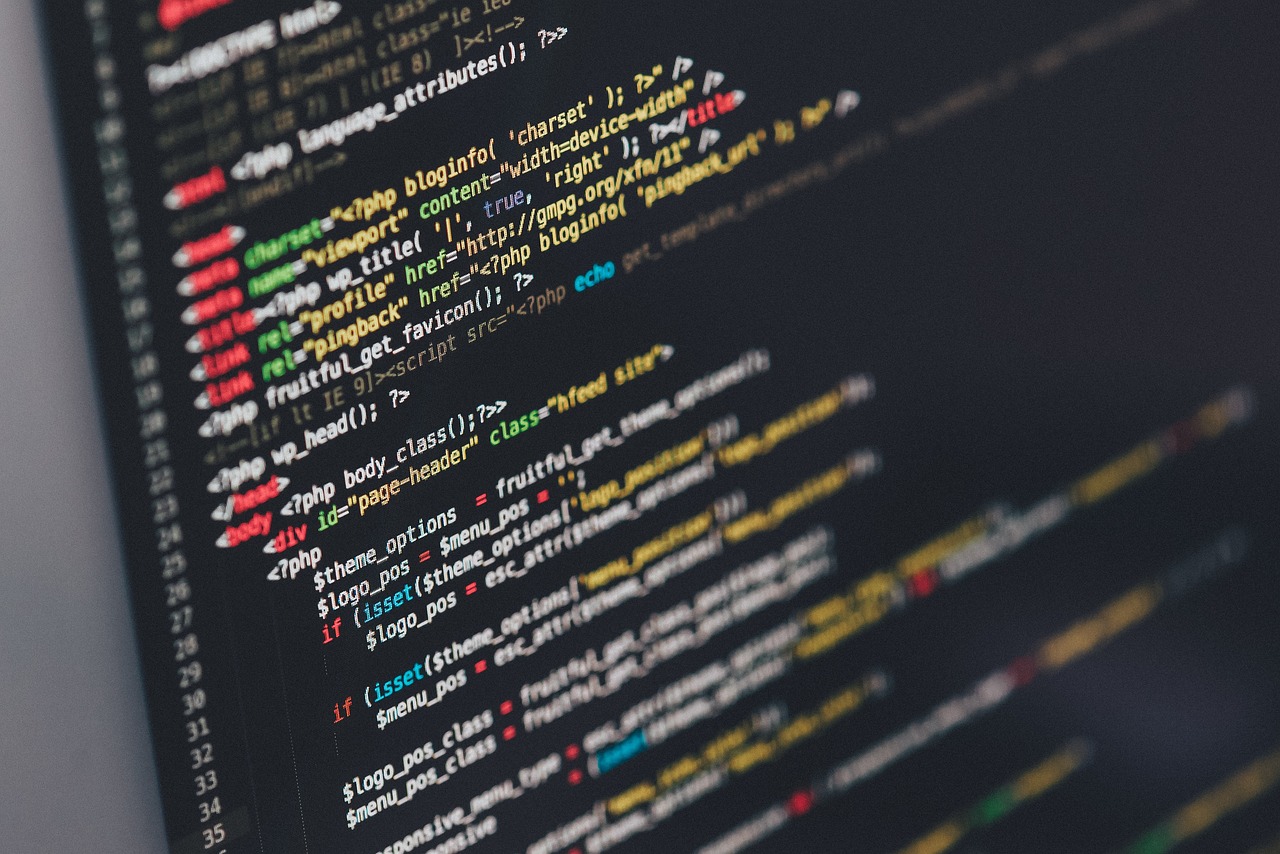
Case Studies of Successful Implementations
When it comes to tackling global poverty, blockchain technology has shown remarkable potential through various successful implementations across different sectors. These case studies not only illustrate the effectiveness of blockchain but also inspire hope for a future where poverty can be significantly alleviated. By examining these real-world examples, we can see how blockchain is not just a buzzword; it’s a transformative tool that can empower communities and enhance their livelihoods.
One notable example is the AgriDigital platform in Australia, which utilizes blockchain to revolutionize agricultural supply chains. Farmers often face challenges in receiving fair prices for their produce due to intermediaries and lack of transparency. AgriDigital addresses this by providing a platform where farmers can sell their goods directly to buyers, ensuring they receive a fair price. The use of blockchain ensures that all transactions are recorded securely and transparently, creating trust among participants. This model has not only improved the income of farmers but has also reduced food waste by optimizing the supply chain.
Another impactful case study is the Healthcare Blockchain Initiative in Africa, which aims to improve access to medical services for impoverished populations. In many regions, healthcare records are often lost or mismanaged, leading to inadequate treatment. This initiative employs blockchain technology to create a secure and immutable record of patients' health histories. By doing so, healthcare providers can access accurate information, leading to better diagnosis and treatment. Moreover, patients from low-income backgrounds can receive quality healthcare without the fear of losing their vital medical records. This initiative not only enhances health outcomes but also fosters a sense of security among the disadvantaged.
These examples highlight the powerful impact of blockchain technology in real-world applications. However, the journey doesn't stop here. The scalability of such projects is crucial for their long-term success. For instance, the integration of blockchain with existing systems must be seamless to ensure that communities can fully benefit from these innovations. Additionally, partnerships with local governments and organizations are essential to foster trust and encourage widespread adoption.
In summary, the successful implementations of blockchain technology in agriculture and healthcare demonstrate its potential to address critical issues faced by impoverished communities. As we continue to explore and expand the use of blockchain, it’s vital to learn from these case studies and replicate their success in other areas. By doing so, we can pave the way for a more equitable and prosperous future for all.
- How does blockchain technology help reduce poverty?
Blockchain provides transparency, security, and accessibility to financial services, which can empower unbanked populations and promote economic growth. - What are some successful case studies of blockchain in poverty alleviation?
Examples include AgriDigital in agriculture and the Healthcare Blockchain Initiative in Africa, both of which have improved lives by enhancing transparency and access to services. - What challenges exist in implementing blockchain solutions?
Challenges include technological barriers, regulatory hurdles, and the need for digital literacy among users in underdeveloped areas.
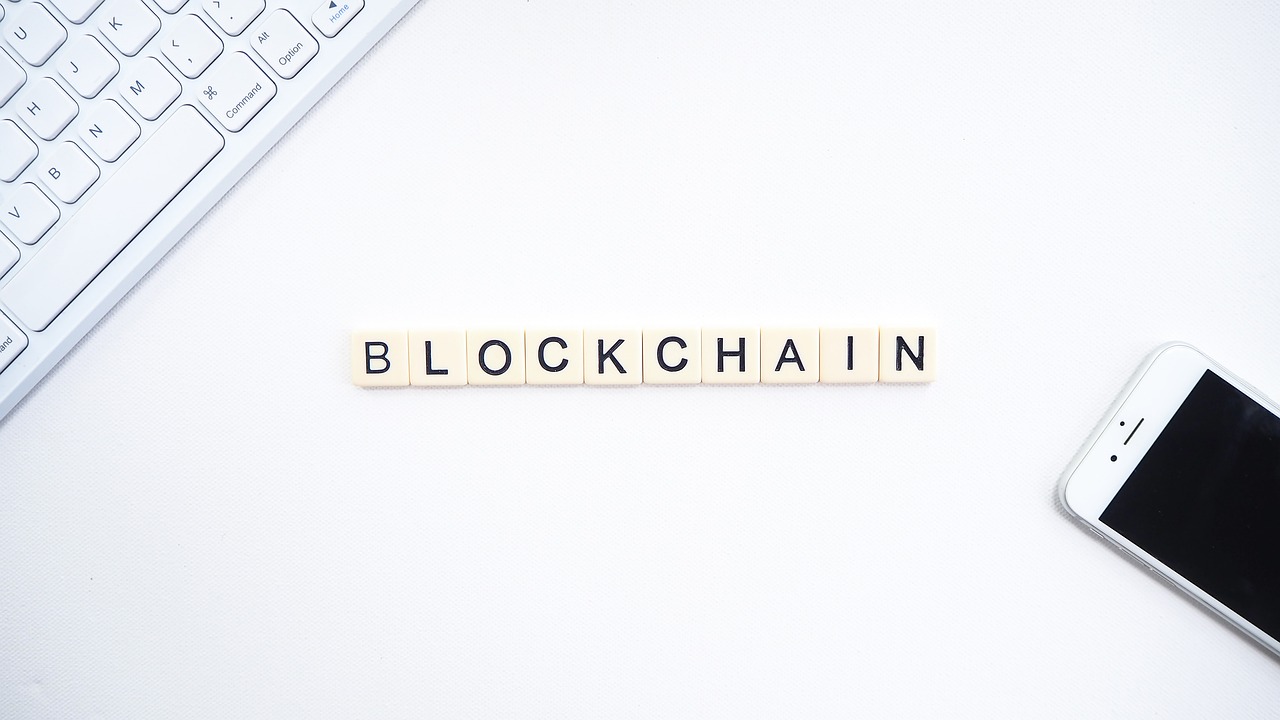
Blockchain in Agriculture
In the vast landscape of agriculture, where smallholder farmers often struggle to get fair prices for their produce, blockchain technology is emerging as a beacon of hope. Imagine a world where farmers can trace their products from the field to the consumer, ensuring transparency and fairness at every step. This is not just a dream; it’s a reality facilitated by blockchain. By providing a decentralized and immutable ledger, blockchain allows all participants in the agricultural supply chain to access and verify information in real-time. This transparency not only builds trust among stakeholders but also empowers farmers to negotiate better prices.
One fascinating application of blockchain in agriculture is the establishment of fair trade practices. Farmers can directly connect with consumers, eliminating middlemen who often take a significant cut of the profits. For instance, a farmer in Kenya can sell their organic coffee directly to consumers in Europe, using a blockchain platform that verifies the quality and origin of their product. This not only boosts the farmer's income but also promotes sustainable farming practices, as consumers are more likely to support ethical sourcing.
Moreover, blockchain can play a crucial role in enhancing food safety. With the ability to track the journey of agricultural products, any contamination or safety issue can be swiftly addressed. For example, if a batch of tomatoes is found to be contaminated, blockchain technology allows for immediate identification of the source and affected parties, minimizing health risks to consumers. This level of accountability is revolutionary in a sector that has often struggled with transparency.
Additionally, blockchain can facilitate access to financing for farmers. Many smallholder farmers lack the collateral needed to secure loans from traditional financial institutions. However, with blockchain, their farming history and product quality can be recorded on a secure ledger, providing potential lenders with the assurance they need to offer loans. This innovative approach can significantly enhance the financial stability of farmers, allowing them to invest in better seeds, equipment, and technology.
To illustrate the impact of blockchain in agriculture, consider the following table that highlights key benefits:
| Benefit | Description |
|---|---|
| Transparency | Enables tracking of products from farm to consumer, ensuring fair pricing. |
| Food Safety | Quick identification and resolution of food safety issues through traceability. |
| Access to Finance | Facilitates microloans based on verified farming data. |
| Fair Trade | Empowers farmers by connecting them directly with consumers. |
In conclusion, the integration of blockchain technology into agriculture is not just a trend; it’s a transformative movement that holds the potential to uplift millions of farmers globally. By enhancing transparency, ensuring food safety, and providing access to financing, blockchain is paving the way for a more equitable agricultural landscape. As we continue to explore the possibilities, it’s clear that this technology could be a game-changer in the fight against poverty in rural communities.
- What is blockchain technology? Blockchain is a decentralized digital ledger that records transactions across many computers securely and transparently.
- How does blockchain improve agricultural practices? It enhances transparency, ensures food safety, and provides easier access to financing for farmers.
- Can blockchain help smallholder farmers? Yes, it enables them to connect directly with consumers and receive fair prices for their products.
- What are the challenges of implementing blockchain in agriculture? Challenges include technological barriers, lack of infrastructure, and the need for education and training.
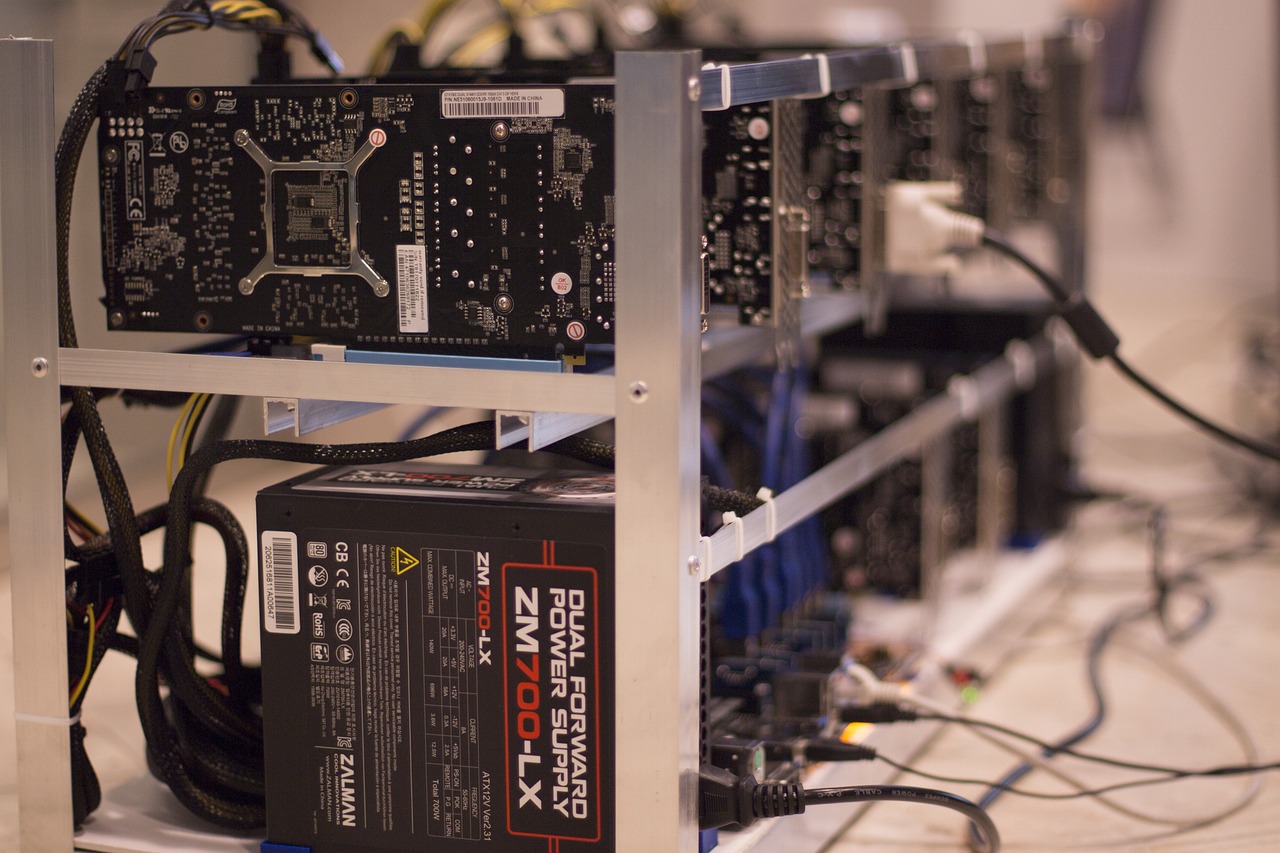
Healthcare Access Initiatives
Access to healthcare is a fundamental human right, yet millions around the globe still struggle to receive basic medical services. This is particularly true in impoverished regions where healthcare infrastructure is often lacking. Blockchain technology has emerged as a game-changer in this arena, offering innovative solutions to enhance healthcare access for underserved populations. By leveraging the inherent characteristics of blockchain—such as decentralization, transparency, and security—healthcare initiatives can be transformed, making medical services more accessible and efficient.
One of the most impactful ways blockchain is being utilized in healthcare is through the creation of decentralized patient records. Traditionally, medical records are stored in centralized databases, which can be vulnerable to breaches and inaccuracies. However, with blockchain, patient data can be stored securely across a distributed network. This not only protects sensitive information but also allows patients to have control over their own health data. Imagine a world where patients can easily share their medical history with healthcare providers, ensuring they receive the right treatment without the hassle of repeated tests or lost records. This is the promise of blockchain in healthcare.
Additionally, blockchain can facilitate telemedicine initiatives, which have gained traction especially during the COVID-19 pandemic. By using blockchain to verify the credentials of healthcare professionals, patients can receive remote consultations with peace of mind. This is particularly beneficial for individuals in rural areas who may not have immediate access to healthcare facilities. With a simple click, patients can connect with qualified doctors, receive diagnoses, and even get prescriptions, all while ensuring that their privacy is maintained.
Moreover, blockchain can play a crucial role in drug supply chain management. The pharmaceutical industry has faced significant challenges with counterfeit drugs, which can be life-threatening. By implementing blockchain technology, every transaction in the drug supply chain can be recorded and verified, ensuring that medications are authentic and safely delivered. This not only protects patients but also enhances trust in healthcare systems.
To illustrate some of these initiatives, consider the following table that highlights a few successful blockchain projects aimed at improving healthcare access:
| Project Name | Description | Impact |
|---|---|---|
| MediLedger | A blockchain network for the pharmaceutical supply chain. | Enhances transparency and reduces counterfeit drugs. |
| Patientory | A platform for secure health information management. | Empowers patients to control their health data. |
| Everledger | A blockchain solution for tracking the provenance of diamonds and other goods. | Ensures ethical sourcing and safe supply chains. |
While the potential of blockchain in healthcare is immense, it’s important to recognize that challenges remain. Issues such as infrastructure requirements, regulatory hurdles, and the need for widespread digital literacy can hinder the adoption of these technologies in low-income areas. Nevertheless, with ongoing innovations and collaborations, the future looks promising. As we continue to explore the intersection of blockchain and healthcare, we can envision a world where everyone, regardless of their socio-economic status, has access to quality medical services.
- How does blockchain improve healthcare access? Blockchain enhances healthcare access by providing secure, decentralized patient records, facilitating telemedicine, and ensuring the authenticity of medications.
- What are the challenges of implementing blockchain in healthcare? Challenges include technological infrastructure, regulatory compliance, and the need for digital literacy among healthcare providers and patients.
- Can blockchain help in managing health data? Yes, blockchain allows patients to control their health data securely and share it with healthcare providers as needed.

The Future of Blockchain in Poverty Reduction
The future of blockchain technology in combating global poverty is not just a dream; it's a rapidly approaching reality. As we look ahead, the potential of blockchain to revolutionize various sectors continues to expand, offering innovative solutions to age-old problems. Imagine a world where financial services are available to everyone, regardless of their location or socio-economic status. This is not just wishful thinking; it's what blockchain promises to deliver. By creating a decentralized financial ecosystem, blockchain can empower individuals in impoverished communities, enabling them to break free from the chains of poverty.
One of the most exciting prospects for blockchain lies in its ability to integrate with other emerging technologies. For instance, when combined with Artificial Intelligence (AI) and the Internet of Things (IoT), blockchain can create a more robust framework for poverty alleviation. These technologies can work together to enhance data collection, improve decision-making, and streamline processes. Imagine farmers using IoT devices to monitor crop health, while blockchain ensures that they receive fair compensation for their produce. This synergy can lead to more efficient agricultural practices, ultimately reducing food insecurity and improving livelihoods.
Moreover, global collaboration will be crucial in harnessing blockchain's full potential for poverty reduction. Governments, NGOs, and private sectors must come together, sharing knowledge, resources, and best practices. This collective effort can pave the way for scalable blockchain solutions that address the unique challenges faced by different communities. By fostering partnerships across borders, we can create a unified front against poverty, leveraging blockchain to drive sustainable development.
As we explore these possibilities, it's essential to remain mindful of the challenges that still lie ahead. Technological barriers, regulatory hurdles, and the need for digital literacy are just a few obstacles that must be overcome. However, with determination and innovation, we can address these issues head-on. The key will be to develop user-friendly platforms that make blockchain accessible to all, ensuring that even the most disadvantaged populations can benefit from its advantages.
In conclusion, the future of blockchain in poverty reduction is filled with promise and potential. By embracing this technology and fostering collaboration, we can create a world where everyone has the opportunity to thrive. The journey may be long and fraught with challenges, but the rewards—greater financial inclusion, improved education, and enhanced healthcare—are well worth the effort. As we stand on the brink of this technological revolution, let’s seize the moment and work together to turn the tide against global poverty.
- What is blockchain technology?
Blockchain is a decentralized digital ledger that records transactions across multiple computers securely and transparently. - How can blockchain help reduce poverty?
Blockchain can enhance financial inclusion, improve supply chain transparency, and provide access to education and healthcare services. - What are smart contracts?
Smart contracts are self-executing contracts with the terms of the agreement directly written into code, facilitating and automating transactions. - What challenges does blockchain face in poverty reduction?
Challenges include technological barriers, regulatory issues, and the need for digital literacy among underserved populations. - How can global collaboration enhance blockchain's impact?
By sharing resources and knowledge, global partnerships can develop scalable blockchain solutions tailored to the needs of different communities.
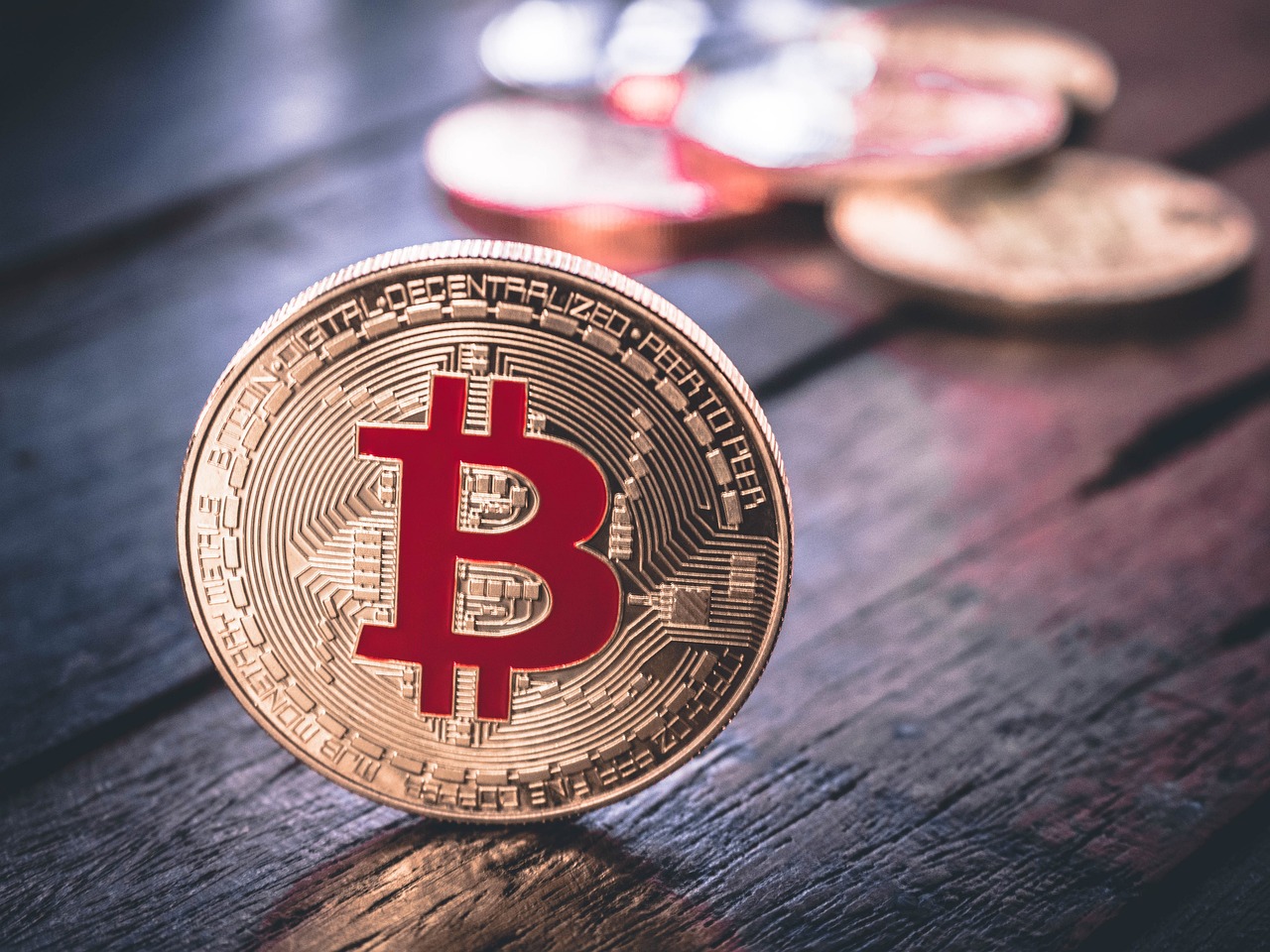
Emerging Technologies Integration
As we look towards the future, the integration of emerging technologies with blockchain presents a thrilling opportunity to enhance poverty alleviation efforts worldwide. Imagine a world where artificial intelligence (AI), the Internet of Things (IoT), and blockchain work together seamlessly to create robust solutions that tackle the multifaceted issue of poverty. This integration could revolutionize how we approach various sectors, including finance, education, and healthcare, making them more efficient and accessible to those who need it most.
For instance, consider how combining blockchain with AI can lead to smarter financial systems. AI algorithms can analyze vast amounts of data to determine creditworthiness, while blockchain can securely store and verify this information. This synergy not only streamlines the lending process but also opens doors for the unbanked population who traditionally struggle to access financial services. By leveraging AI's analytical capabilities alongside blockchain's transparency, we can foster an environment where individuals are empowered to improve their economic situations.
Moreover, the IoT can play a pivotal role in enhancing supply chain management through blockchain technology. Imagine sensors tracking agricultural products from farm to table, ensuring that farmers receive fair compensation while consumers enjoy fresh produce. This integration can significantly reduce food waste and enhance food security, particularly in developing regions where poverty is most prevalent.
However, while the potential is immense, it's essential to recognize the challenges that come with integrating these technologies. Issues such as data privacy, interoperability between systems, and the need for a robust digital infrastructure must be addressed. Policymakers, tech developers, and community leaders must collaborate to create frameworks that facilitate this integration while protecting the rights and data of vulnerable populations.
As we move forward, the possibilities seem endless. With continuous advancements in technology, the vision of a poverty-free world becomes more achievable. By harnessing the power of blockchain alongside AI and IoT, we can create innovative solutions that not only alleviate poverty but also empower individuals to build sustainable futures for themselves and their communities.
- How does blockchain technology help in poverty reduction?
Blockchain provides transparency, security, and accessibility to financial services, enabling unbanked populations to participate in the economy. - What role do emerging technologies play in enhancing blockchain's impact?
Emerging technologies like AI and IoT can optimize processes, improve efficiency, and create more robust solutions for poverty alleviation. - What are the main challenges in integrating these technologies?
Challenges include data privacy concerns, the need for digital infrastructure, and regulatory hurdles that must be addressed for effective implementation.
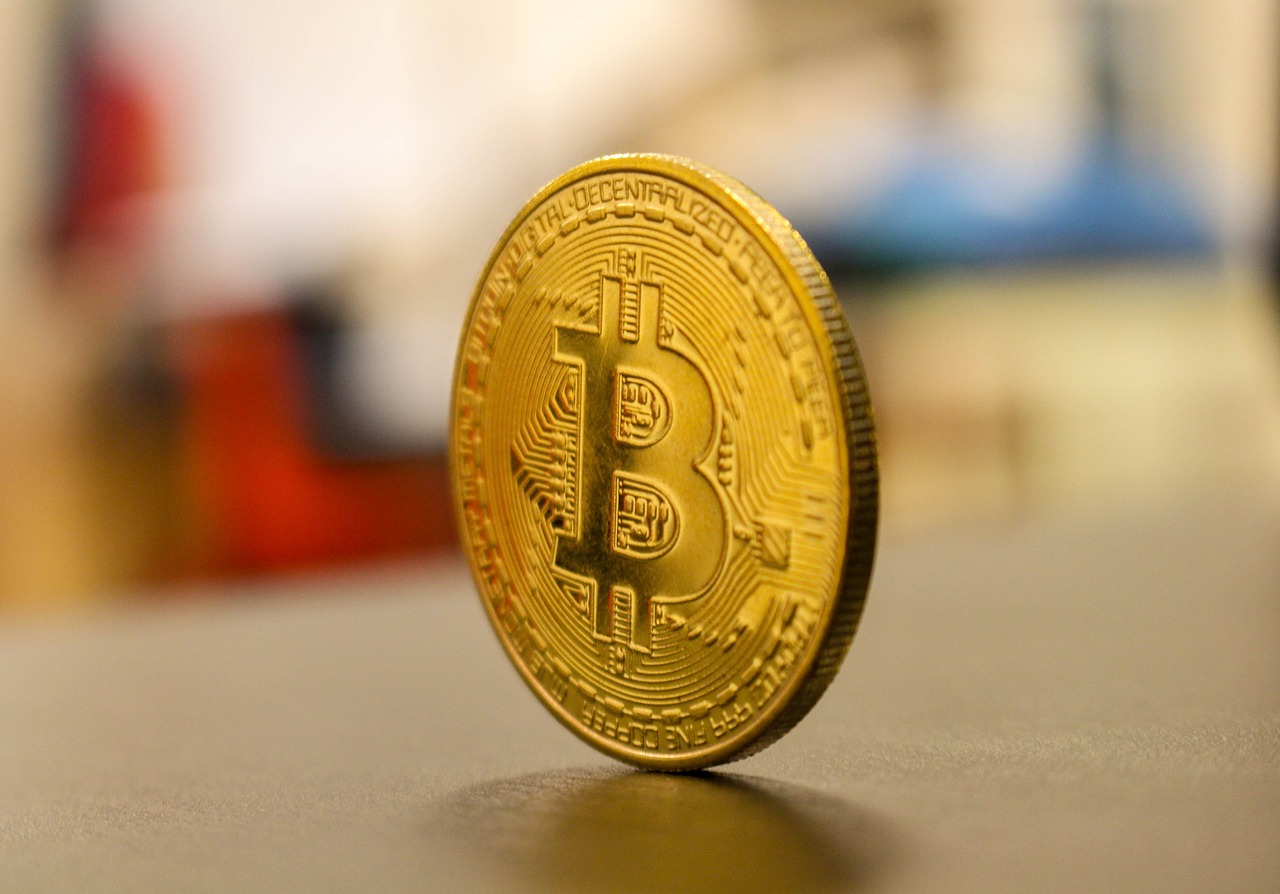
Global Collaboration Efforts
When it comes to tackling global poverty, the phrase "together we stand, divided we fall" has never been more relevant. Global collaboration is essential in leveraging blockchain technology to create sustainable solutions that can uplift communities worldwide. By working together, governments, NGOs, private sectors, and tech innovators can harness the power of blockchain to create a more equitable economic landscape.
One of the most significant aspects of global collaboration is the sharing of knowledge and resources. Countries that have successfully implemented blockchain solutions can serve as models for others. For instance, initiatives like the United Nations' Blockchain for Impact project aim to bring together various stakeholders to explore how blockchain can address global challenges, including poverty. This project encourages countries to share their experiences, best practices, and lessons learned, creating a rich tapestry of insights that can be adapted and implemented in different contexts.
Moreover, international partnerships can lead to the development of cross-border blockchain solutions that enhance financial inclusion. For example, imagine a world where remittances—money sent home by migrant workers—can be transferred instantly and at a fraction of the current cost, thanks to blockchain technology. This would not only empower families in developing countries but also stimulate local economies. Collaborative efforts between nations can pave the way for regulatory frameworks that support such initiatives, making it easier for blockchain solutions to flourish.
Additionally, collaboration can help address the digital divide that exists in many parts of the world. By pooling resources, countries can invest in the necessary infrastructure to support blockchain technology, ensuring that even the most remote communities can benefit. This might include providing access to high-speed internet, affordable devices, and digital literacy programs. Such initiatives can create an ecosystem where blockchain technology is accessible to everyone, regardless of their socio-economic status.
The integration of blockchain with other emerging technologies, such as Artificial Intelligence (AI) and the Internet of Things (IoT), is another area where global collaboration can yield significant results. By combining these technologies, we can develop comprehensive solutions that address multiple facets of poverty. For instance, AI can analyze data collected through IoT devices to optimize agricultural practices, while blockchain can ensure that farmers receive fair compensation for their produce. Collaborative efforts can lead to innovations that not only alleviate poverty but also promote sustainability.
In summary, the fight against global poverty is a collective endeavor that requires collaboration and innovation. By leveraging blockchain technology and fostering partnerships across borders, we can create a more inclusive and prosperous world. The success of these initiatives will depend on our ability to work together, share knowledge, and adapt to the unique challenges faced by different communities. Only then can we hope to make a meaningful impact in the fight against poverty.
- What is blockchain technology? Blockchain is a decentralized digital ledger that records transactions across many computers securely and transparently.
- How can blockchain reduce poverty? By providing access to financial services, enhancing supply chain transparency, and improving education and skill development opportunities.
- What are smart contracts? Smart contracts are self-executing contracts with the terms of the agreement directly written into code, which can automate processes and reduce costs.
- What challenges does blockchain face in poverty reduction? Challenges include technological barriers, regulatory issues, and the need for digital literacy in underserved communities.
- How can countries collaborate on blockchain initiatives? Through partnerships, sharing best practices, and developing cross-border solutions that enhance financial inclusion and infrastructure.
Frequently Asked Questions
- What is blockchain technology?
Blockchain technology is a decentralized digital ledger that records transactions across many computers. This ensures that the recorded transactions cannot be altered retroactively, providing a high level of security and transparency.
- How can blockchain help reduce global poverty?
Blockchain can help reduce poverty by providing unbanked populations access to financial services, facilitating microfinance solutions, enhancing supply chain transparency, and improving access to education and vocational training.
- What are smart contracts?
Smart contracts are self-executing contracts with the terms of the agreement directly written into code. They automate and enforce agreements without the need for intermediaries, reducing costs and increasing transparency in transactions.
- What role does decentralized finance (DeFi) play in poverty alleviation?
DeFi platforms utilize blockchain to provide accessible financial services, such as lending and savings, to underserved communities. This promotes economic growth and financial inclusion, empowering individuals to improve their living conditions.
- How does blockchain enhance supply chain transparency?
Blockchain enhances supply chain transparency by providing a tamper-proof record of transactions. This ensures fair trade practices, helps producers get better prices, and reduces fraud, which is crucial for developing economies.
- Can blockchain improve access to education?
Yes! Blockchain can improve access to education by enabling secure credential verification and supporting online learning platforms. This allows individuals from low-income communities to gain recognized qualifications and skills.
- What challenges does blockchain face in poverty reduction?
Challenges include technological barriers, regulatory issues, and the need for digital literacy. Infrastructure requirements can also hinder adoption in remote areas, making it essential to address these obstacles for successful implementation.
- Are there successful examples of blockchain in poverty reduction?
Absolutely! There are numerous case studies showcasing blockchain's impact in areas like agriculture and healthcare, where it has improved supply chains, ensured fair prices for farmers, and enhanced access to medical services.
- What does the future hold for blockchain in combating poverty?
The future looks promising! With advancements in technology and global collaboration, blockchain could integrate with other emerging technologies like AI and IoT, creating more robust solutions for poverty alleviation.

